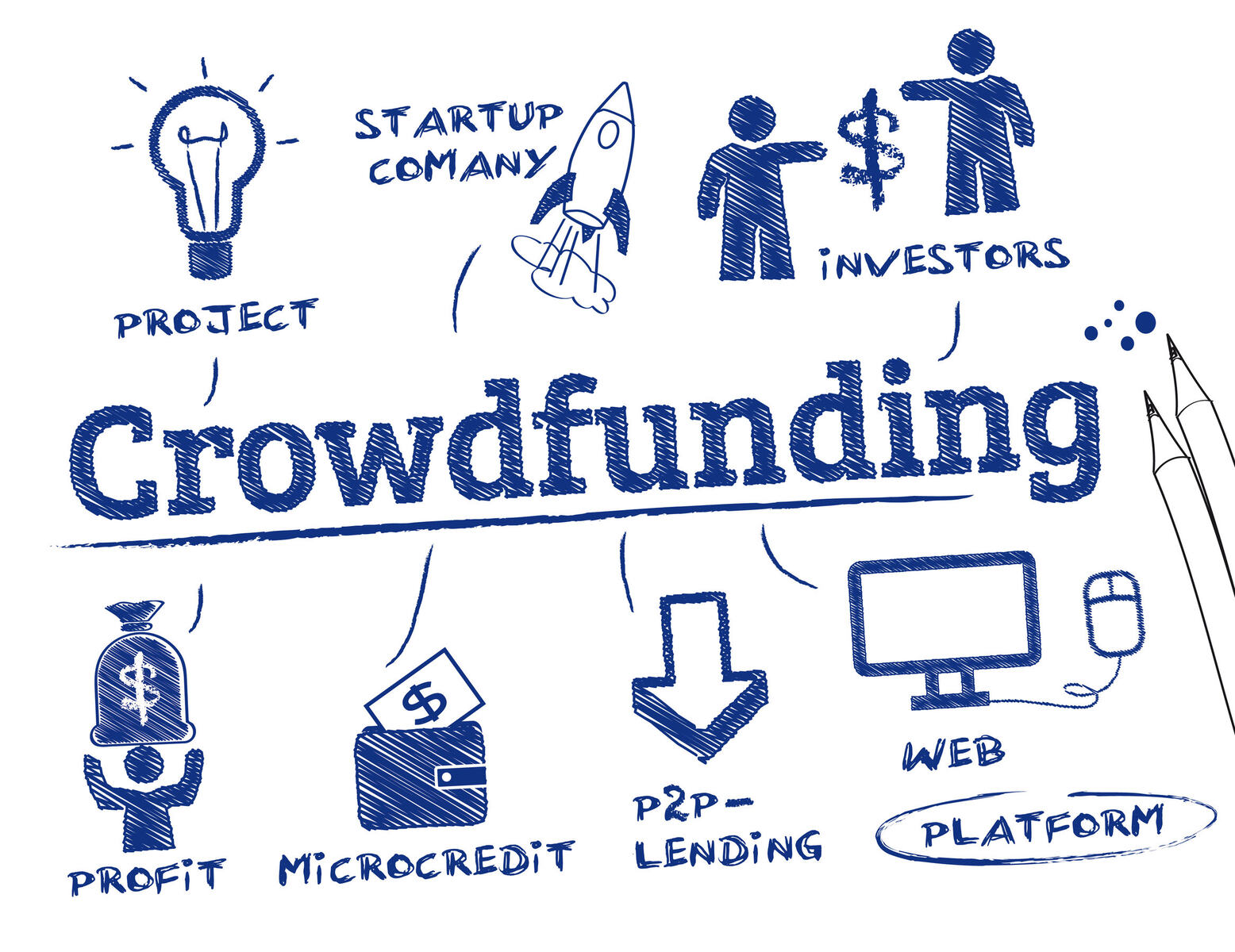Introduction
Crowdfunding has emerged as a popular method for individuals, entrepreneurs, and organizations to raise funds for their projects, businesses, or personal causes. With the advent of technology and the rise of online platforms, crowdfunding has become more accessible and widespread. But have you ever wondered how crowdfunding sites actually make money?
In this article, we will explore the different ways crowdfunding platforms generate revenue, the challenges they face, and the importance of understanding their business model for both campaign creators and supporters.
But first, let’s define crowdfunding. It refers to the practice of funding a project or venture by raising small amounts of money from a large number of people, typically through an online platform. Rather than relying on a single large investment from a traditional investor or financial institution, crowdfunding allows individuals or businesses to tap into a vast network of individuals who are willing to contribute small amounts towards their goals.
This democratization of funding has opened doors for innovative ideas, social causes, and creative projects that may have struggled to secure traditional funding. Crowdfunding also provides an opportunity for supporters to be part of something meaningful and contribute to projects they believe in.
Now that we understand the concept of crowdfunding, let’s explore the different types of crowdfunding platforms available.
What is crowdfunding?
Crowdfunding is a method of raising funds for a project or venture by collecting small contributions from a large number of people, typically through an online platform. It allows individuals, entrepreneurs, and organizations to leverage the power of the crowd to bring their ideas to life.
There are various types of crowdfunding, each catering to different needs and objectives:
- Rewards-based crowdfunding: This is the most common type of crowdfunding, where campaign creators offer rewards or incentives to individuals who contribute to their projects. These rewards can range from a simple acknowledgment to early access to the product or exclusive merchandise.
- Equity-based crowdfunding: With equity-based crowdfunding, individuals receive financial stakes or shares in the venture in exchange for their contributions. This allows supporters to become partial owners of the business and potentially earn a return on their investment if the venture is successful.
- Donation-based crowdfunding: In this type of crowdfunding, contributors make donations without expecting any financial return or rewards. It is often used for charitable causes, community projects, or to support individuals with personal needs.
- Debt-based crowdfunding: Also known as peer-to-peer lending, debt-based crowdfunding involves individuals lending money to others or businesses and earning interest on their investment. It provides an alternative to traditional banks and financial institutions.
Crowdfunding platforms act as intermediaries between campaign creators and supporters, providing a platform for creators to showcase their projects and enabling supporters to contribute easily and securely. These platforms have revolutionized the way funds are raised and have tapped into the vast potential of online communities.
The growth of crowdfunding has been fueled by its numerous advantages. It offers a viable alternative to traditional funding sources, reducing the reliance on banks or angel investors. It allows creators to validate their ideas and gauge market interest before launching a product or business. Crowdfunding also fosters a sense of community and engagement, as supporters become invested in the success of the projects they contribute to.
Now that we have a clear understanding of what crowdfunding entails, let’s explore how crowdfunding platforms operate and generate revenue.
Different types of crowdfunding platforms
As crowdfunding has gained popularity, different types of crowdfunding platforms have emerged to cater to specific needs and industries. These platforms vary in their features, target audience, and the types of projects they support. Let’s explore some of the main types of crowdfunding platforms:
- General crowdfunding platforms: These platforms, such as Kickstarter and Indiegogo, cater to a wide range of projects across different categories, including technology, creative arts, social causes, and more. They provide a space for creators to showcase their projects and attract supporters from all over the world.
- Equity crowdfunding platforms: Unlike the rewards-based model, equity crowdfunding platforms like Seedrs and Crowdcube enable individuals to invest in startups and gain shares or equity in return. These platforms often focus on entrepreneurial ventures and high-growth potential businesses seeking funding from a larger pool of investors.
- Donation-based platforms: These platforms, such as GoFundMe and JustGiving, specialize in donation-based crowdfunding, where individuals and organizations can raise money for charitable causes, medical expenses, disaster relief, and other personal or social needs. Users can create campaigns and share their stories to garner support from the community.
- Real estate crowdfunding platforms: Real estate crowdfunding platforms, like RealtyMogul and Fundrise, allow individuals to invest in property projects, such as residential or commercial developments, without the need for large capital investments. These platforms offer a more accessible and diversified approach to real estate investment.
- Creative or artistic platforms: For creators in the arts, music, film, and other creative fields, platforms like Patreon and Drip provide a space to connect with their audience and receive ongoing support. Supporters can become patrons and contribute regular payments in exchange for exclusive content or behind-the-scenes access.
While these are some of the main types of crowdfunding platforms, there are also niche platforms catering to specific industries or causes, such as agriculture, social enterprises, or environmental projects. The key is to choose a platform that aligns with the specific goals and requirements of your project.
Now that we have explored the different types of crowdfunding platforms, let’s delve into how these platforms generate revenue and sustain their operations.
How do crowdfunding platforms make money?
Crowdfunding platforms play a crucial role in connecting campaign creators with supporters and facilitating the fundraising process. To sustain their operations and continue providing their services, these platforms employ various revenue-generating strategies. Let’s explore some of the ways crowdfunding platforms make money:
- Transaction fees: One of the primary ways crowdfunding platforms generate revenue is through transaction fees. When supporters contribute funds to a campaign, the platform deducts a small percentage as a processing fee. This fee typically ranges from 5% to 10% and varies depending on the platform and the amount of money raised. Transaction fees are essential for covering the costs of maintaining the platform, including hosting, security, and customer support.
- Platform fees: In addition to transaction fees, some crowdfunding platforms charge a platform fee to campaign creators. This fee is deducted from the total funds raised and is used to cover the platform’s expenses and investments in improving their services. The platform fee can range from 3% to 8% of the funds raised, depending on the platform and the features and support provided to campaign creators.
- Payment processing fees: Crowdfunding platforms often partner with payment gateway providers, such as PayPal or Stripe, to handle the financial transactions securely. These payment processors charge a small fee for their services, which the crowdfunding platform may pass on to the campaign creators or factor into their overall revenue model. Payment processing fees typically range from 2% to 3% of the transaction amount.
- Additional services fees: Some crowdfunding platforms offer additional services or premium features to enhance the fundraising experience. These services may include personalized coaching, marketing support, campaign optimization, and analytics insights. They can be provided as optional upgrades for campaign creators, who pay an additional fee to access these value-added services.
- Advertising and sponsorship fees: Larger crowdfunding platforms often have partnerships with sponsors or advertisers who are interested in reaching their active and engaged user base. These platforms may charge fees for sponsored content, featured projects, or targeted advertising placements on their platform. By leveraging their user data and traffic, crowdfunding platforms can generate additional revenue streams from advertising partnerships.
It’s important to note that the revenue generated from these various sources is essential for crowdfunding platforms to sustain their operations, invest in technology and security upgrades, improve user experience, and support campaign creators and the wider community.
Now that we have explored the different ways crowdfunding platforms make money, let’s discuss some of the challenges they face in maintaining profitability.
Transaction fees
Transaction fees are a fundamental revenue stream for crowdfunding platforms. When supporters contribute funds to a campaign, the platform deducts a small percentage as a processing fee. This fee covers the costs associated with facilitating the transaction and maintaining the platform’s infrastructure.
The exact percentage of the transaction fee can vary depending on the platform and the amount of money raised. Typically, transaction fees range from 5% to 10% of the funds contributed. However, some platforms may have a tiered fee structure, where the percentage decreases as the funds raised increase, incentivizing campaign creators to aim for higher fundraising goals.
Transaction fees are crucial for crowdfunding platforms as they help cover various expenses, including:
- Platform Maintenance: Crowdfunding platforms require ongoing maintenance to ensure smooth functionality, user experience, and site security. The revenue generated from transaction fees allows platforms to invest in server hosting, software updates, bug fixes, and cyber-security measures.
- Customer Support: Providing responsive customer support is essential for a positive user experience. The funds generated from transaction fees enable crowdfunding platforms to employ a dedicated support team to handle inquiries, provide assistance to campaign creators and supporters, and address any issues that may arise during the crowdfunding process.
- Marketing and Promotion: Crowdfunding platforms need to actively promote the projects hosted on their platform to attract supporters and increase campaign visibility. Transaction fees contribute to the marketing budget, allowing platforms to invest in online advertising, social media campaigns, and other promotional activities to drive traffic and engagement.
- Platform Enhancements: To stay competitive and offer a seamless user experience, crowdfunding platforms must continuously innovate and improve their features and functionalities. The revenue generated from transaction fees contributes to research and development efforts, UX/UI enhancements, and the implementation of new tools and technologies to meet the evolving needs of campaign creators and supporters alike.
While transaction fees are a vital source of revenue for crowdfunding platforms, it’s essential to strike a balance. Setting the fee too high may discourage campaign creators and supporters from using the platform, while setting it too low may not cover the platform’s operational costs. Platforms must carefully consider market competition, user expectations, and the value they provide to maintain a sustainable fee structure.
Transaction fees are a win-win for both crowdfunding platforms and campaign creators. They enable platforms to continue offering their services and support, while campaign creators benefit from a user-friendly infrastructure that facilitates their fundraising efforts. As the crowdfunding industry evolves, transaction fees will continue to play a significant role in the financial sustainability of these platforms.
Platform fees
In addition to transaction fees, crowdfunding platforms may also charge campaign creators platform fees. These fees are deducted from the total funds raised by the campaign and are used to cover the platform’s operational expenses, investments in technology, and the services provided to campaign creators and supporters.
The percentage of platform fees can vary depending on the crowdfunding platform and the features and support offered. Typically, platform fees range from 3% to 8% of the total funds raised. However, some platforms may have a tiered fee structure, with lower percentages for higher funding amounts, incentivizing campaign creators to strive for more significant fundraising goals.
The revenue generated from platform fees supports several key aspects of crowdfunding platforms:
- Platform Development: Crowdfunding platforms need to continuously improve their technology and user interface to provide a seamless and user-friendly experience. The funds generated from platform fees contribute to research and development efforts, platform upgrades, and the integration of new features and tools to enhance campaign creations and supporters’ interactions.
- Support and Guidance: Campaign creators often rely on crowdfunding platforms for guidance and support throughout their fundraising journey. Platform fees help fund dedicated support teams that assist in campaign setup, provide marketing advice, offer best practices, and address any technical or operational concerns. This ensures that campaign creators receive the necessary assistance to optimize their campaigns’ chances of success.
- Education and Resources: Many crowdfunding platforms invest in educational resources, tutorials, and guides to help campaign creators navigate the crowdfunding process effectively. The revenue generated from platform fees enables platforms to create and maintain these resources, offering valuable insights on campaign planning, marketing strategies, setting realistic goals, and engaging with supporters.
- Quality Control: Maintaining the credibility and integrity of the crowdfunding platform is essential in building trust among campaign creators and supporters. Platform fees help fund rigorous quality control measures, including review processes for campaign submissions, verification of project details, and guidelines to ensure compliance with ethical and legal standards. This ensures that only legitimate and trustworthy campaigns are featured on the platform.
The platform fees charged by crowdfunding platforms are crucial for their sustainability and ability to support the crowdfunding ecosystem. By investing in platform improvements, support services, and educational resources, crowdfunding platforms strive to enhance the overall crowdfunding experience and increase the success rates of campaigns.
Campaign creators, in turn, benefit from the services and resources provided by the platform fees. They receive valuable guidance, access to a user-friendly interface, and the opportunity to showcase their projects to a wide audience. With the platform’s support, campaign creators can effectively communicate their vision and engage with supporters, increasing their chances of meeting or exceeding their fundraising goals.
Overall, platform fees are a necessary part of the crowdfunding model, allowing platforms to sustain their operations, facilitate campaign success, and foster a thriving crowdfunding community.
Payment processing fees
In addition to transaction fees and platform fees, crowdfunding platforms may also incur payment processing fees from third-party payment gateway providers. These fees are charged for securely processing financial transactions, ensuring the confidentiality of sensitive information, and transferring funds between campaign creators and supporters.
The exact percentage of payment processing fees can vary depending on the payment gateway provider and the specific financial transaction being processed. Typically, payment processing fees range from 2% to 3% of the transaction amount, but they may vary based on factors such as the currency used, the country of the campaign creator and supporter, and the type of payment method employed.
Payment processing fees cover various aspects of the crowdfunding platform’s financial operations:
- Secure Payment Processing: Payment gateway providers ensure the secure transmission of financial data between campaign creators, supporters, and the crowdfunding platform. They employ encryption protocols and industry-standard security measures to protect sensitive information and prevent fraudulent activities.
- Fraud Prevention and Risk Management: Payment processing fees contribute to the implementation of robust fraud detection and prevention systems. These systems flag suspicious transactions, identify potential risks, and safeguard the integrity and trustworthiness of the crowdfunding platform.
- International Payment Handling: Crowdfunding platforms often cater to a global audience, with campaign creators and supporters from different countries. Payment processing fees help facilitate cross-border transactions and handle currency conversions, ensuring a seamless payment experience for users around the world.
- Payouts to Campaign Creators: When a campaign successfully reaches its funding goal, the crowdfunding platform facilitates the transfer of funds to the campaign creator. Payment processing fees contribute to the operational costs associated with processing these payouts, including bank transfers, currency conversions, and any intermediary fees incurred during the transfer process.
Payment processing fees are an essential aspect of the financial infrastructure supporting crowdfunding platforms. By partnering with reputable payment gateway providers, crowdfunding platforms can provide a secure and streamlined payment process for campaign creators and supporters, enhancing trust and confidence in the platform.
It’s worth noting that payment processing fees are separate from the transaction fees and platform fees charged by crowdfunding platforms. These fees are typically set by the payment gateway providers themselves and are not directly controlled by the crowdfunding platform. However, the crowdfunding platform may pass on these fees to the campaign creators or incorporate them into their overall revenue model.
Overall, payment processing fees are a necessary component of the crowdfunding ecosystem, allowing for secure and efficient financial transactions between campaign creators and supporters. They ensure the seamless operation of the crowdfunding platform and contribute to the overall user experience.
Additional services fees
In addition to transaction fees and platform fees, crowdfunding platforms may offer additional services or premium features to enhance the fundraising experience for campaign creators. These services, often provided as optional upgrades, are designed to optimize campaign performance, increase visibility, and offer personalized support.
The fees associated with additional services vary based on the crowdfunding platform and the specific services offered. Campaign creators can choose to avail themselves of these services based on their individual needs and budget. Some common examples of additional services that may incur fees include:
- Personalized Coaching and Support: Crowdfunding platforms may offer one-on-one coaching sessions or personalized support to campaign creators. These sessions provide guidance on campaign planning, marketing strategies, storytelling, and engagement with supporters. The fees associated with personalized coaching reflect the expertise and time of the platform’s support team.
- Marketing and Promotion Packages: To maximize campaign visibility and reach a broader audience, crowdfunding platforms may offer marketing and promotion packages. These packages may include social media promotion, targeted advertising, email marketing, or partnerships with influencers or media outlets. The fees for marketing and promotion services vary depending on the scope and reach of the campaign’s promotional efforts.
- Advanced Analytics and Insights: Some crowdfunding platforms provide advanced analytics tools and insights to help campaign creators track their campaign’s progress, measure impact, and make data-informed decisions. These tools may offer detailed metrics on campaign performance, supporter demographics, referral sources, and engagement levels. Fees associated with advanced analytics services reflect the development and maintenance of these data-driven capabilities.
- Design and Branding Services: To present campaigns in a visually appealing manner, crowdfunding platforms may offer design and branding services. These services can include professional video production, graphic design for campaign assets, logo creation, and overall brand development. Fees for design and branding services depend on the complexity and deliverables of the requested creative work.
The additional services provided by crowdfunding platforms offer campaign creators an opportunity to elevate their campaigns and stand out from the competition. These services can provide valuable expertise and support, especially to individuals who may be new to the crowdfunding landscape or require assistance in specific areas like marketing or design.
It’s important for campaign creators to carefully consider their needs, budget, and the potential return on investment when deciding whether to utilize additional services. While these services may incur fees, they can contribute to campaign success by leveraging the platform’s expertise and resources.
From the perspective of crowdfunding platforms, offering these additional services generates revenue beyond the transaction and platform fees. It allows the platform to diversify its revenue streams and cater to the specific needs of campaign creators who may require more specialized support or value-added features.
Ultimately, the availability of additional services provides an opportunity for campaign creators to enhance their campaigns, gain a competitive edge, and increase their chances of reaching or exceeding their fundraising goals.
Advertising and sponsorship fees
Advertising and sponsorship fees are an additional revenue stream for crowdfunding platforms, particularly larger platforms with a substantial user base and significant traffic. These fees are charged to sponsors or advertisers who are interested in reaching the active and engaged audience of the crowdfunding platform.
Crowdfunding platforms offer various advertising and sponsorship opportunities to companies and organizations looking for exposure and brand visibility. Some examples of advertising and sponsorship options include:
- Sponsored Content: Crowdfunding platforms may offer opportunities for sponsors to create and promote sponsored content within the platform. This can include featured articles, interviews, or spotlight campaigns, allowing sponsors to showcase their products, services, or initiatives to the platform’s user community.
- Featured Projects: Platforms often provide options for campaigns to be featured prominently on the platform’s homepage or in specific categories. Sponsors can pay a fee to have their projects highlighted and gain increased visibility among the platform’s user base.
- Targeted Advertising: Crowdfunding platforms collect valuable user data, such as preferences, interests, and demographic information. This allows platforms to offer targeted advertising opportunities to sponsors, ensuring that their ads are displayed to relevant audiences who are more likely to engage with their offerings.
- Partnerships and Collaborations: Crowdfunding platforms may collaborate with sponsors or brands on joint initiatives or campaigns. These partnerships can include cross-promotion, co-branded activities, or exclusive product offerings, providing mutual benefits for both the crowdfunding platform and the sponsoring organization.
Advertising and sponsorship fees contribute to the overall revenue of crowdfunding platforms and help support ongoing operations, platform enhancements, and the development of new features. They enable platforms to attract sponsors who are interested in gaining exposure to the platform’s community of campaign creators and supporters.
For sponsors and advertisers, collaborating with crowdfunding platforms presents an opportunity to align with innovative projects, support causes, and engage with a passionate and socially conscious audience. The organic and community-driven nature of crowdfunding creates a unique environment for sponsors to connect with potential customers who are actively seeking new products, experiences, or services.
It is essential for crowdfunding platforms to strike a balance between advertising and sponsorship opportunities and maintaining a user-friendly and authentic experience for campaign creators and supporters. Transparency and clear guidelines are crucial to ensure that advertising and sponsored content are clearly identified and do not compromise the integrity or objectives of the crowdfunding platform.
By offering advertising and sponsorship options, crowdfunding platforms can diversify their revenue sources while still prioritizing the mission of supporting innovative projects and fostering a collaborative crowdfunding community.
Challenges faced by crowdfunding platforms in making money
While crowdfunding platforms offer valuable services to campaign creators and supporters, they also face several challenges in generating revenue and maintaining financial sustainability. These challenges include:
- Competition: The crowdfunding industry is highly competitive, with numerous platforms vying for both campaign creators and supporters. Platforms must differentiate themselves and offer unique value propositions to attract users and stand out in a crowded market. This presents a challenge in establishing and maintaining a strong user base that generates consistent revenue.
- High Marketing Costs: As crowdfunding platforms compete for visibility, they often need to invest in marketing campaigns, search engine optimization, and advertising to attract campaign creators and supporters. These marketing costs can be substantial, particularly for smaller platforms or new entrants in the market. Balancing the need for marketing efforts with revenue generation can be a challenge for crowdfunding platforms.
- User Acquisition and Retention: Acquiring new campaign creators and attracting a supportive user base is crucial for crowdfunding platforms. However, maintaining user engagement and retention can be equally challenging. Platforms need to continuously offer value, provide excellent user experiences, and foster a sense of community to retain both campaign creators and supporters. Without an active and engaged user base, generating revenue becomes more difficult.
- Risk and Failure of Campaigns: Not all campaigns on crowdfunding platforms achieve their funding goals. Some campaigns may fail to gain traction or not deliver on their promises to supporters. These failures can result in negative experiences for both campaign creators and supporters, potentially impacting the platform’s reputation and the trust of its users. Platforms must handle these challenges effectively to maintain their credibility and retain the confidence of their community.
- Economic Factors and Market Volatility: Economic conditions and market fluctuations can have an impact on the success of campaigns and overall crowdfunding activity. During challenging economic times, individuals may be more hesitant to contribute funds, while in more prosperous times, competition among campaigns may increase. Crowdfunding platforms must adapt to these economic factors and navigate market volatility to ensure a steady flow of campaigns and revenue.
To overcome these challenges and maintain financial viability, crowdfunding platforms employ various strategies. These may include diversifying revenue streams, exploring partnerships or collaborations, offering additional services, adapting to emerging industry trends, and constantly improving their user experience based on feedback and user data.
Ultimately, the success of crowdfunding platforms in making money depends on their ability to adapt to dynamic market conditions, foster a supportive and engaged user community, and provide value-added services that meet the evolving needs of campaign creators and supporters.
By addressing these challenges effectively, crowdfunding platforms can navigate the complexities of revenue generation and continue providing a platform for individuals and organizations to bring their creative ideas, entrepreneurial ventures, and social causes to life.
Conclusion
Crowdfunding platforms have revolutionized the way individuals, entrepreneurs, and organizations raise funds for their projects, ventures, and personal causes. These platforms have become a vital tool for accessing capital, connecting with supporters, and turning ideas into reality.
In this article, we explored the various ways crowdfunding platforms make money. Transaction fees, platform fees, payment processing fees, additional services fees, and advertising and sponsorship fees are among the primary sources of revenue for these platforms. Each fee serves a specific purpose in supporting the platform’s operations, providing valuable services to campaign creators, and ensuring a secure and seamless user experience for supporters.
However, crowdfunding platforms face their fair share of challenges in generating revenue and maintaining financial sustainability. Competition, high marketing costs, user acquisition and retention, the risk of campaign failures, and economic factors all present obstacles that platforms must navigate to thrive in the crowdfunding industry.
Overcoming these challenges requires innovation, adaptability, and a deep understanding of the needs and expectations of both campaign creators and supporters. Crowdfunding platforms need to continually evolve, invest in technology and user experience enhancements, and offer unique value propositions to stand out in a competitive landscape.
Despite these challenges, crowdfunding platforms play a vital role in democratizing funding and empowering individuals and organizations to pursue their dreams. They provide a platform for creative projects, social initiatives, and entrepreneurial ventures that might otherwise struggle to secure traditional funding.
As the crowdfunding industry continues to evolve, it is important for both campaign creators and supporters to understand the revenue models of crowdfunding platforms. This understanding enables campaign creators to make informed decisions when selecting a platform, and supporters to recognize the value they receive while contributing to campaigns they believe in.
In conclusion, crowdfunding platforms have revolutionized the way we fund and support projects. Their ability to generate revenue is crucial to sustain their operations, provide valuable services, and continue fostering a vibrant and innovative crowdfunding community. With ongoing advancements and improvements, crowdfunding platforms are poised for continued growth and impact in the world of funding and entrepreneurship.









![How Does Crowdfunding Work? [Beginner-Friendly]](https://robots.net/wp-content/uploads/2020/07/How-does-crowdfunding-work-300x212.jpg)















